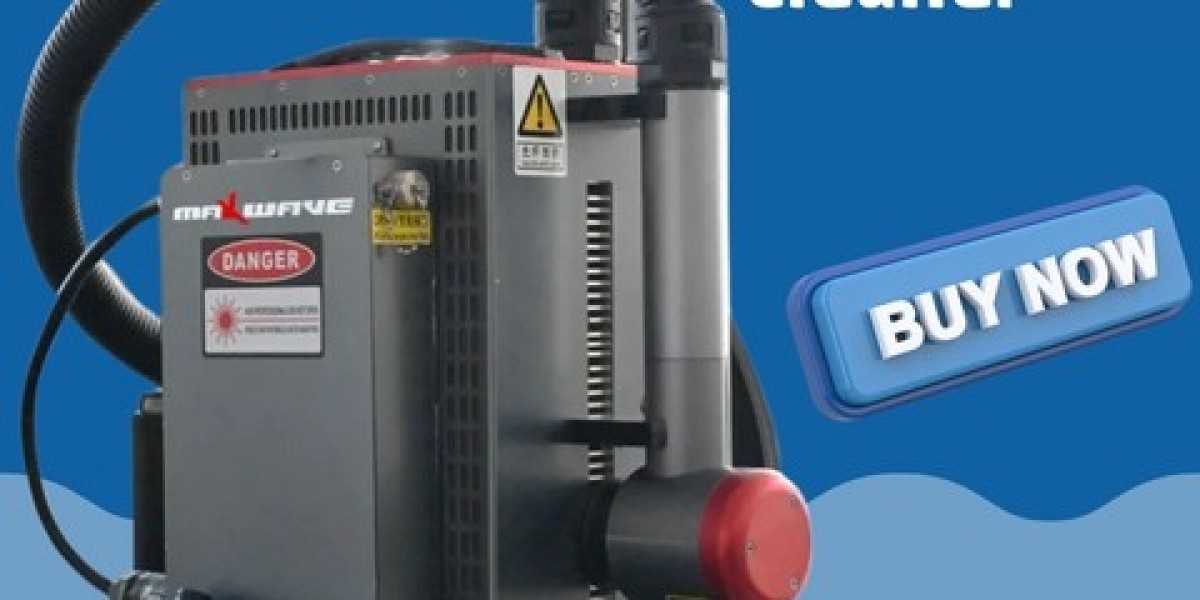This is where the handheld laser cleaner steps in as a modern solution that’s changing the way businesses approach surface treatment. Compact, powerful, and efficient, this device uses the latest laser technology to clean surfaces without contact, chemicals, or residue.
Understanding the Handheld Laser Cleaner
A handheld laser cleaner is a portable device that removes rust, paint, oil, coatings, or contaminants from metal and non-metal surfaces using a focused laser beam. It’s designed for ease of use, enabling operators to target areas with high precision. When the laser beam hits the surface, it heats and vaporizes unwanted material, leaving the base surface untouched and clean.
This technology works through the principle of laser ablation — a process in which laser energy interacts with contaminants and converts them into gas or dust. This reaction occurs within microseconds, ensuring fast, controlled, and thorough cleaning without mechanical contact or harmful chemicals.
Industries like automotive, aerospace, manufacturing, shipbuilding, and even restoration have adopted the handheld laser cleaner because of its reliability and effectiveness. It offers consistent results, making it a valuable addition to workshops, production lines, and maintenance facilities.
How It Works
The working process of a handheld laser cleaner is both simple and highly technical. It includes the following stages:
Laser Emission: The system generates a laser beam with adjustable power levels.
Surface Interaction: The laser beam targets the contaminated surface and heats the unwanted layer.
Material Removal: The contaminants absorb the laser energy and evaporate, while the base surface remains unharmed.
Residue Collection: Any remaining particles are removed through simple air blowers or vacuum attachments, leaving the area clean and ready for further processing.
This non-contact method is suitable for cleaning complex shapes, corners, and delicate materials that traditional methods might damage.
Applications of Handheld Laser Cleaner
The versatility of the handheld laser cleaner makes it suitable for a wide range of uses. Some of the most common applications include:
Rust removal: Ideal for cleaning rust from steel, iron, and other metals without grinding or scraping.
Paint removal: Effective for removing old coatings from vehicles, machinery, or metal parts before repainting or welding.
Oil and grease cleaning: Used in manufacturing environments to remove oil residues before assembly or inspection.
Weld preparation and post-weld cleaning: Helps ensure clean surfaces before welding and removes oxidation afterward.
Restoration work: Museums and restoration specialists use laser cleaning for historical artifacts, sculptures, and stone surfaces.
Mold and tool cleaning: Maintains precision molds and tools in the plastic, tire, and electronics industries.
Each of these applications showcases the adaptability of the handheld laser cleaner, proving its value across multiple industrial sectors.
Why Industries Are Moving Toward Handheld Laser Cleaners
The industrial cleaning landscape is shifting as more companies focus on sustainability, efficiency, and cost control. Traditional cleaning techniques often require chemicals, generate waste, and involve extensive downtime. The handheld laser cleaner eliminates these challenges by offering a dry, contact-free, and controllable method of cleaning.
It also aligns with modern environmental regulations by reducing hazardous waste and minimizing energy consumption. Since the cleaning process does not rely on consumables like sand or chemicals, operating costs remain low over time.
In addition, the handheld design adds flexibility to the process. Operators can carry the cleaner to different sites or move easily around large structures such as tanks, pipes, or vehicle bodies. This portability increases efficiency and productivity, especially in field operations and on-site maintenance.
The Role of Laser Power and Frequency
The effectiveness of a handheld laser cleaner depends on its power and pulse frequency. For example, lower-powered models are suitable for light-duty cleaning tasks, while higher-powered systems can tackle thick rust or stubborn coatings. Adjusting frequency and pulse duration allows users to control how deep or aggressive the cleaning process is.
Some advanced handheld laser cleaners come with user-friendly interfaces that let operators set parameters based on material type and contamination level. This precision ensures consistent results, even on sensitive materials like aluminum or copper.
Maintenance and Safety Practices
Even though the handheld laser cleaner is built for durability, proper maintenance is key to ensuring long-term performance. Regular inspection of the laser head, protective lenses, and cooling systems helps maintain efficiency. Keeping the optical components clean is essential since dust or residue can affect beam quality.
Operators should follow safety protocols such as wearing laser-protective goggles and ensuring the workspace is properly ventilated. Most handheld laser cleaners are equipped with built-in safety systems, including interlocks and emergency stop functions, to enhance operator protection.
Industrial Impact and Market Growth
The growing adoption of handheld laser cleaners is transforming several industries. In manufacturing, it has reduced downtime by offering faster preparation and cleaning cycles. In the automotive sector, it has become a preferred method for cleaning molds, dies, and body components. Shipyards use it to remove corrosion from metal surfaces, while energy companies rely on it for pipeline and turbine maintenance.
Market demand continues to rise as industries recognize the long-term value of laser cleaning. With technology becoming more affordable and efficient, the handheld laser cleaner is expected to become a standard tool in maintenance and production processes.
Environmental and Operational Benefits
Sustainability plays a central role in the adoption of laser cleaning. Since the process produces no chemical waste or abrasive residue, it contributes to cleaner working environments and reduces waste disposal costs. Additionally, the reduced use of consumables aligns with global sustainability goals, making it an eco-friendly solution for modern industries.
Energy efficiency is another factor. The handheld laser cleaner uses energy only when the laser is active, ensuring minimal waste. This efficient design lowers operational costs and improves the return on investment over time.
Future of Handheld Laser Cleaning
As laser technology evolves, handheld cleaners are becoming more compact, efficient, and automated. Integration with digital controls, smart monitoring, and real-time data analysis will further improve precision and reliability. These developments are paving the way for broader use across industries that demand high-quality surface preparation and environmentally responsible processes.
The trend indicates a shift toward more sustainable production and maintenance practices. Companies adopting handheld laser cleaners are not only improving operational efficiency but also enhancing their commitment to environmental responsibility and modern technology.
Final Thoughts
The handheld laser cleaner represents the next generation of industrial cleaning tools — combining precision, safety, and sustainability in one portable device. Its ability to remove contaminants without damaging base materials has made it an essential tool for industries that value quality and efficiency. Whether used for rust removal, surface preparation, or restoration, this technology offers consistent performance and long-term reliability.
As more industries continue to modernize their cleaning processes, the handheld laser cleaner stands out as a dependable and forward-thinking choice. It’s not just a piece of equipment; it’s a practical solution that reflects the ongoing evolution of industrial surface cleaning.







